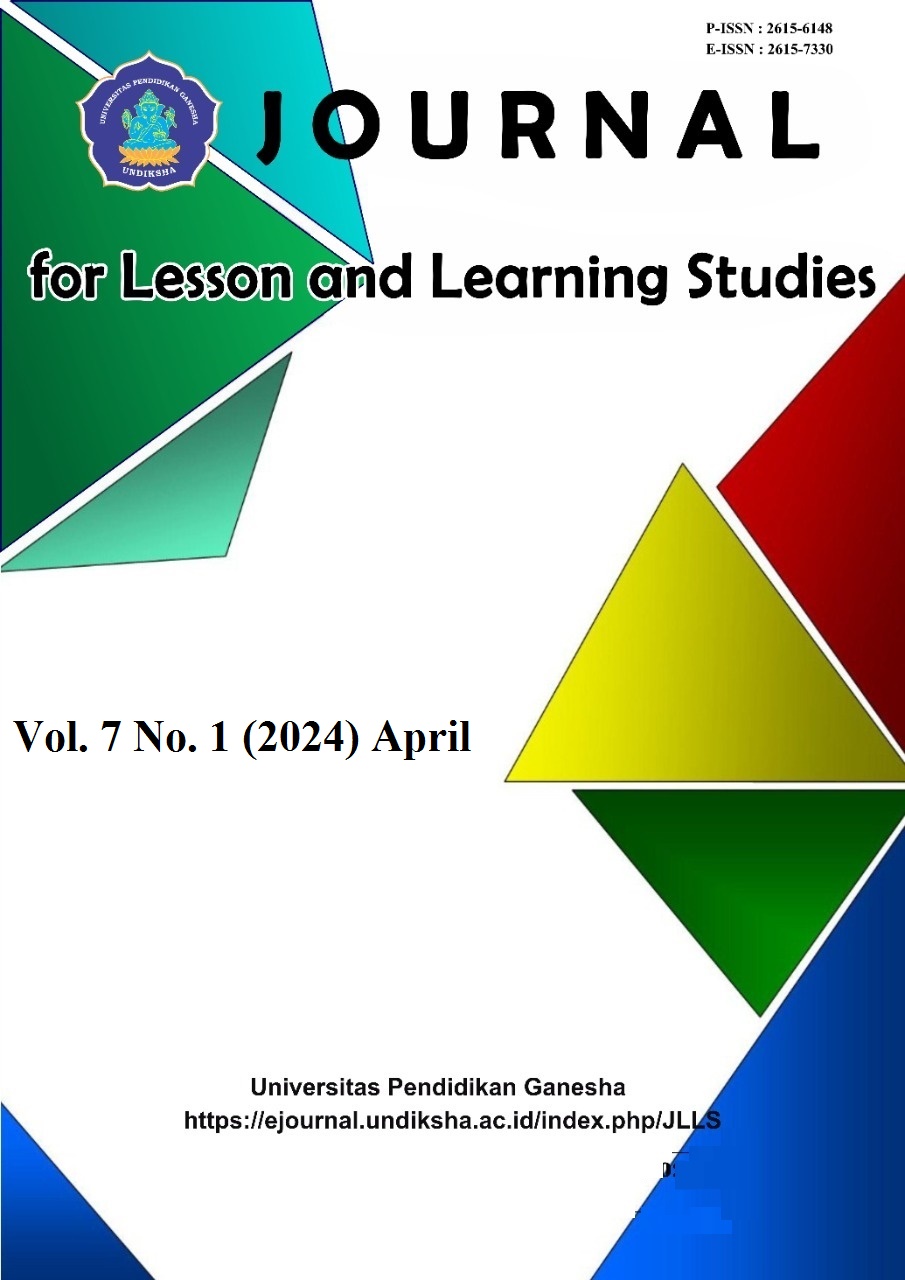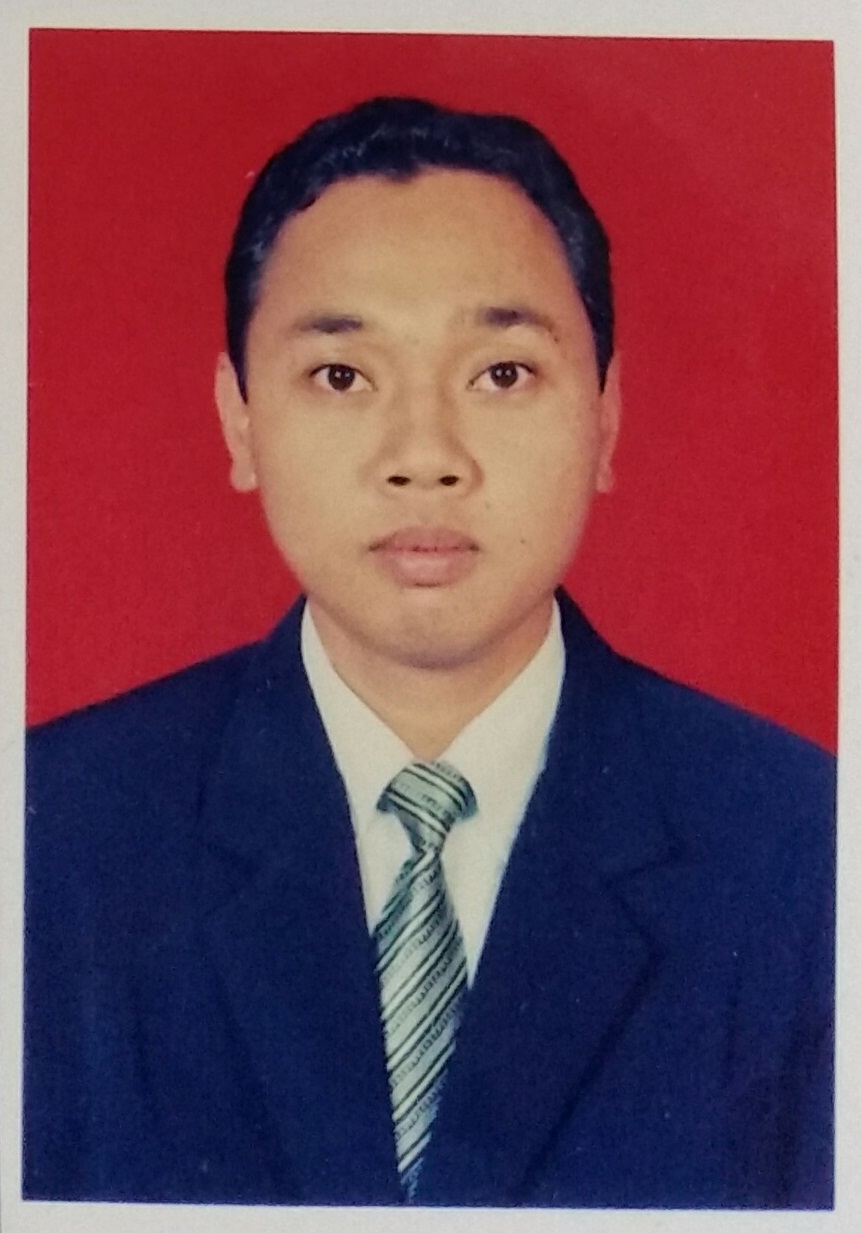Small Sided Games Training Model to Improve Basic First Touch Football Technical Skills of Football School Students
DOI:
https://doi.org/10.23887/jlls.v7i1.74948Kata Kunci:
Small Sided Games, First Touch, Football, StudentAbstrak
Training modification is an important strategy in sports training to improve athlete performance, and in the context of football, SSG is one promising method. Therefore, this study aims to analyze the effectiveness of the Small Sided Games (SSG) training model in improving basic football technique skills in Muspan U-12 Year Football School (SSB) students. This study used a quantitative approach with Quasi-Experimental method, adopting Pre-test Post-test Non-Equivalent Control Group design to measure exercise effectiveness. The sample of this study consisted of SSB Muspan U-12 Year students. Data was collected through tests that measured basic football technical skills, namely passing, dribbling, and shooting. This test is carried out before and after the application of the SSG exercise model, to assess changes in basic engineering skills. The results of the data analysis showed a significant improvement in basic football technical skills after the implementation of SSG training. This is evidenced by the sig (2-tailed) value of the Independent Sample t-Test test which reaches 0.000, far below the threshold of 0.05. These findings confirm that SSG practice is effective in improving basic football technique skills in SSB Muspan U-12 Year students. The conclusions of this study are important for football coaches working with younger age groups, suggesting that exercise modification through the SSG model can be an effective strategy for improving basic technical skills.
Referensi
Ahmed, Z. H., Maleki, F., Yousefikhoshbakht, M., & Haron, H. (2023). Solving the vehicle routing problem with time windows using modified football game algorithm. Egyptian Informatics Journal, 24(4), 100403. https://doi.org/10.1016/j.eij.2023.100403. DOI: https://doi.org/10.1016/j.eij.2023.100403
Apryanto, R. (2019). Pengaruh Latihan Small Sided Games Terhadap peningkatan kapasitas Aerobik Maksimal dan Keterampilan Dribbling pada Pemain Sepakbola. Biormatika Jurnal Ilmiah FKIP Universitas Subang, 5(01), 2461–3961. https://doi.org/10.35569/biormatika.v5i01.414. DOI: https://doi.org/10.35569/biormatika.v5i01.414
Beiderbeck, D., Evans, N., Frevel, N., & Schmidt, S. L. (2023). The impact of technology on the future of football – A global Delphi study. Technological Forecasting and Social Change, 187, 122186. https://doi.org/10.1016/j.techfore.2022.122186. DOI: https://doi.org/10.1016/j.techfore.2022.122186
Beine, M., Peracchi, S., & Zanaj, S. (2023). Ancestral diversity and performance: Evidence from football data. Journal of Economic Behavior & Organization, 213, 193–214. https://doi.org/10.1016/j.jebo.2023.07.024. DOI: https://doi.org/10.1016/j.jebo.2023.07.024
Buraimo, B., Forrest, D., McHale, I. G., & Tena, J. D. (2022). Armchair fans: Modelling audience size for televised football matches. European Journal of Operational Research, 298(2), 644–655. https://doi.org/10.1016/j.ejor.2021.06.046. DOI: https://doi.org/10.1016/j.ejor.2021.06.046
Cabarkapa, D., Cabarkapa, D. V., Philipp, N. M., Eserhaut, D. A., Downey, G. G., & Fry, A. C. (2022). Impact of Distance and Proficiency on Shooting Kinematics in Professional Male Basketball Players. Journal of Functional Morphology and Kinesiology, 7(4). https://doi.org/10.3390/jfmk7040078. DOI: https://doi.org/10.3390/jfmk7040078
Chen, X., & Sun, L. (2021). Campus football application based on FPGA system and GPS wearable electronic equipment. Microprocessors and Microsystems, 81, 103784. https://doi.org/10.1016/j.micpro.2020.103784. DOI: https://doi.org/10.1016/j.micpro.2020.103784
Cherkashin, M., van Goor, S., Berezin, N., Berezina, N., Hovhannisyan, H., Tevanyan, V., Vanesyan, N., & Berezin, D. (2023). 47 Basic Life Support education for Football Federation of Armenia - small part of the global ERC-UEFA project. Resuscitation, 192, S19–S20. https://doi.org/10.1016/S0300-9572(23)00393-3. DOI: https://doi.org/10.1016/S0300-9572(23)00393-3
Corrigan, J., O’Keeffe, S., & O’Connor, S. (2023). Barriers and facilitators to injury prevention in ladies Gaelic football: A qualitative study. Physical Therapy in Sport, 59, 151–161. https://doi.org/10.1016/j.ptsp.2022.12.008. DOI: https://doi.org/10.1016/j.ptsp.2022.12.008
da Costa, I. B., Marinho, L. B., & Pires, C. E. S. (2022). Forecasting football results and exploiting betting markets: The case of “both teams to score.” International Journal of Forecasting, 38(3), 895–909. https://doi.org/10.1016/j.ijforecast.2021.06.008. DOI: https://doi.org/10.1016/j.ijforecast.2021.06.008
Ersan, O., Demir, E., & Assaf, A. (2022). Connectedness among fan tokens and stocks of football clubs. Research in International Business and Finance, 63, 101780. https://doi.org/10.1016/j.ribaf.2022.101780. DOI: https://doi.org/10.1016/j.ribaf.2022.101780
Fan, M., Liu, F., Huang, D., & Zhang, H. (2023). Determinants of international football performance: Empirical evidence from the 1994–2022 FIFA World Cup. Heliyon, 9(10), e20252. https://doi.org/10.1016/j.heliyon.2023.e20252. DOI: https://doi.org/10.1016/j.heliyon.2023.e20252
Farley, J. B., Keogh, J. W. L., Woods, C. T., & Milne, N. (2022). Injury profiles of Australian football players across five, women’s and girls’ competition levels. Journal of Science and Medicine in Sport, 25(1), 58–63. https://doi.org/10.1016/j.jsams.2021.08.016. DOI: https://doi.org/10.1016/j.jsams.2021.08.016
Fernandes, T. L., de SantAnna, J. P. C., Fiorio, B. A. P., de Faria, R. R., Pedrinelli, A., & Bordalo, M. (2022). State of the art for articular cartilage morphological and composition imaging evaluation in football players. Journal of Cartilage & Joint Preservation, 2(2), 100067. https://doi.org/10.1016/j.jcjp.2022.100067. DOI: https://doi.org/10.1016/j.jcjp.2022.100067
Fernández-Villarino, R. (2021). Sustainability in the football industry: An approach to the gap between theoretical formulation and practical application, through the results of the social fair play project. Heliyon, 7(6), e07318. https://doi.org/10.1016/j.heliyon.2021.e07318. DOI: https://doi.org/10.1016/j.heliyon.2021.e07318
Fjesme, S. L., Lv, J. R., & Shekhar, C. (2023). The world cup in football and the US IPO market. Journal of Corporate Finance, 80, 102410. https://doi.org/10.1016/j.jcorpfin.2023.102410. DOI: https://doi.org/10.1016/j.jcorpfin.2023.102410
Forsman, H., Blomqvist, M., Davids, K., Liukkonen, J., & Konttinen, N. (2016). Identifying technical, physiological, tactical and psychological characteristics that contribute to career progression in soccer. International Journal of Sports Science & Coaching, 11(4), 505–513. https://doi.org/10.1177/174795411665505. DOI: https://doi.org/10.1177/1747954116655051
Furlan, A., Grandinetti, R., & Rentocchini, F. (2023). Inter-organizational routine replication: Evidence from major football championships. Scandinavian Journal of Management, 39(2), 101261. https://doi.org/10.1016/j.scaman.2023.101261. DOI: https://doi.org/10.1016/j.scaman.2023.101261
Galli, L., Galvan, G., Levato, T., Liti, C., Piccialli, V., & Sciandrone, M. (2021). Football: Discovering elapsing-time bias in the science of success. Chaos, Solitons & Fractals, 152, 111370. https://doi.org/10.1016/j.chaos.2021.111370. DOI: https://doi.org/10.1016/j.chaos.2021.111370
Gervis, M., & Goldman, A. (2020). The Flourishing Footballers programme: Using psycho-education to develop resilience through ACT. Journal of Contextual Behavioral Science, 18, 146–151. https://doi.org/10.1016/j.jcbs.2020.09.004. DOI: https://doi.org/10.1016/j.jcbs.2020.09.004
Gopalan, M., Rosinger, K., & Ahn, J. B. (2020). Use of quasi-experimental research designs in education research: Growth, promise, and challenges. Review of Research in Education, 44(1), 218–243. https://doi.org/10.3102/0091732X20903302. DOI: https://doi.org/10.3102/0091732X20903302
Ichinose, G., Tsuchiya, T., & Watanabe, S. (2021). Robustness of football passing networks against continuous node and link removals. Chaos, Solitons & Fractals, 147, 110973. https://doi.org/10.1016/j.chaos.2021.110973. DOI: https://doi.org/10.1016/j.chaos.2021.110973
Kercher, K. A., Steinfeldt, J. A., Rettke, D. J., Zuidema, T. R., Walker, M. J., Martinez Kercher, V. M., Silveyra, P., Seo, D.-C., Macy, J. T., Hulvershorn, L. A., & Kawata, K. (2023). Association Between Head Impact Exposure, Psychological Needs, and Indicators of Mental Health Among U.S. High School Tackle Football Players. Journal of Adolescent Health, 72(4), 502–509. https://doi.org/10.1016/j.jadohealth.2022.11.247. DOI: https://doi.org/10.1016/j.jadohealth.2022.11.247
Khan, N. A., El-Menyar, A., Asim, M., Abdurahiman, S., Al Musleh, A. A., & Al-Thani, H. (2023). Academic and healthcare efforts from Cessation to complete resumption of professional football tournaments during COVID-19 pandemic: A narrative review. Heliyon, 9(12), e22519. https://doi.org/10.1016/j.heliyon.2023.e22519. DOI: https://doi.org/10.1016/j.heliyon.2023.e22519
Kozak, J., & Głowania, S. (2021). Heterogeneous ensembles of classifiers in predicting Bundesliga football results. Procedia Computer Science, 192, 1573–1582. https://doi.org/10.1016/j.procs.2021.08.161. DOI: https://doi.org/10.1016/j.procs.2021.08.161
Krill, M. K., & Peterson, A. R. (2023). Chapter 74 - Football. In B. J. Krabak & A. Brooks (Eds.), The Youth Athlete (pp. 789–801). Academic Press. https://doi.org/10.1016/B978-0-323-99992-2.00011-6. DOI: https://doi.org/10.1016/B978-0-323-99992-2.00011-6
Majewska, A., & Majewska, A. (2022). Are social media matter for the football club finance? Procedia Computer Science, 207, 2068–2076. https://doi.org/10.1016/j.procs.2022.09.266. DOI: https://doi.org/10.1016/j.procs.2022.09.266
Makovec Knight, J., Mitra, B., McIntosh, A., Howard, T. S., Clifton, P., Makdissi, M., Rosenfeld, J. V, Harcourt, P., & Willmott, C. (2022). The association of padded headgear with concussion and injury risk in junior Australian football: A prospective cohort study. Journal of Science and Medicine in Sport, 25(4), 312–320. https://doi.org/10.1016/j.jsams.2021.11.043. DOI: https://doi.org/10.1016/j.jsams.2021.11.043
Marcelino, R., Sampaio, J., Amichay, G., Gonçalves, B., Couzin, I. D., & Nagy, M. (2020). Collective movement analysis reveals coordination tactics of team players in football matches. Chaos, Solitons & Fractals, 138, 109831. https://doi.org/10.1016/j.chaos.2020.109831. DOI: https://doi.org/10.1016/j.chaos.2020.109831
Memmert, D., & Rein, R. (2018). Match analysis, big data and tactics: Current trends in elite soccer. Deutsche Zeitschrift Fur Sportmedizin, 69(3), 65–72. https://doi.org/10.5960/dzsm.2018.322. DOI: https://doi.org/10.5960/dzsm.2018.322
Meng, X., Li, Z., Wang, S., Karambakhsh, A., Sheng, B., Yang, P., Li, P., & Mao, L. (2020). A video information driven football recommendation system. Computers & Electrical Engineering, 85, 106699. https://doi.org/10.1016/j.compeleceng.2020.106699. DOI: https://doi.org/10.1016/j.compeleceng.2020.106699
Okilanda, A., Dlis, F., Humaid, H., Putra, D. D., Arisman, & Muslimin. (2021). Defense warm-up exercise material for 13-age athlete using video technology in covid-19 era. International Journal of Human Movement and Sports Sciences, 9(4), 629–634. https://doi.org/10.13189/saj.2021.090404. DOI: https://doi.org/10.13189/saj.2021.090404
Palczewski, K., & Sałabun, W. (2019). Identification of the football teams assessment model using the COMET method. Procedia Computer Science, 159, 2491–2501. https://doi.org/10.1016/j.procs.2019.09.424. DOI: https://doi.org/10.1016/j.procs.2019.09.424
Panchuk, D., Klusemann, M. J., & Hadlow, S. M. (2018). Exploring the effectiveness of immersive video for training decision-making capability in elite, youth basketball players. Frontiers in Psychology, 9(2315), 1–9. https://doi.org/10.3389/fpsyg.2018.02315. DOI: https://doi.org/10.3389/fpsyg.2018.02315
Qin, Y. (2022). A high output triboelectric nanogenerator integrated with wave-structure electrode for football monitoring. Current Applied Physics, 39, 122–127. https://doi.org/10.1016/j.cap.2022.04.010. DOI: https://doi.org/10.1016/j.cap.2022.04.010
Reid, B., Schreiber, K., Shawhan, J., Stewart, E., Burch, R., & Reimann, W. (2020). Reaction time assessment for coaching defensive players in NCAA division 1 American football: A comprehensive literature review. International Journal of Industrial Ergonomics, 77, 102942. https://doi.org/10.1016/j.ergon.2020.102942. DOI: https://doi.org/10.1016/j.ergon.2020.102942
Sadowska-Krępa, E., Bańkowski, S., Kargul, A., & Iskra, J. (2021). Changes in blood antioxidant status in American football players and soccer players over a training macrocycle. Journal of Exercise Science & Fitness, 19(4), 229–233. https://doi.org/10.1016/j.jesf.2021.08.001. DOI: https://doi.org/10.1016/j.jesf.2021.08.001
Serpiello, F. R., Cox, A., Oppici, L., Hopkins, W. G., & Varley, M. C. (2017). The Loughborough Soccer Passing Test has impractical criterion validity in elite youth football. Science and Medicine in Football, 1(1), 60–64. https://doi.org/10.1080/02640414.2016.1254810. DOI: https://doi.org/10.1080/02640414.2016.1254810
Song, H. (2021). Application of embedded wearable devices in football training injury prevention. Microprocessors and Microsystems, 82, 103915. https://doi.org/10.1016/j.micpro.2021.103915. DOI: https://doi.org/10.1016/j.micpro.2021.103915
Storm, L. K., Book, R. T., Hoyer, S. S., Henriksen, K., Küttel, A., & Larsen, C. H. (2022). Every Boy’s dream: A mixed method study of young professional Danish football player’s transnational migration. Psychology of Sport and Exercise, 59, 102125. https://doi.org/10.1016/j.psychsport.2021.102125. DOI: https://doi.org/10.1016/j.psychsport.2021.102125
Toma, P., & Campobasso, F. (2023). Using data analytics to capture the strategic and financial decision-making of Europe’s top football club. Technological Forecasting and Social Change, 186, 122116. https://doi.org/10.1016/j.techfore.2022.122116. DOI: https://doi.org/10.1016/j.techfore.2022.122116
Valente, H. G., de Oliveira, R. R., & Baroni, B. M. (2023). How are hamstring strain injuries managed in elite men’s football clubs? A survey with 62 Brazilian physical therapists. Physical Therapy in Sport, 61, 73–81. https://doi.org/10.1016/j.ptsp.2023.03.001. DOI: https://doi.org/10.1016/j.ptsp.2023.03.001
Wallace, T. C. (2022). A strange symbiosis: Seismic ray theory and Saturday touch football — Donald V. Helmberger as a graduate advisor. Earthquake Science, 35(1), 11–13. https://doi.org/10.1016/j.eqs.2022.01.017. DOI: https://doi.org/10.1016/j.eqs.2022.01.017
Whalen, J. M., Nelson, D. J., Whalen, R. J., & Provencher, M. T. (2023). Coaching, Mentorship, and Leadership Lessons Learned from Professional Football. Clinics in Sports Medicine, 42(2), 291–299. https://doi.org/10.1016/j.csm.2022.11.009. DOI: https://doi.org/10.1016/j.csm.2022.11.009
Unduhan
Diterbitkan
Cara Mengutip
Terbitan
Bagian
Lisensi
Hak Cipta (c) 2024 Aldo Naza Putra, Eval Edmizal, Indri Wulandari, Frizki Amra, Atradinal, Fiky Zarya, Ali Munir

Artikel ini berlisensiCreative Commons Attribution-ShareAlike 4.0 International License.
Authors who publish with the Journal for Lesson and Learning Studies agree to the following terms:
- Authors retain copyright and grant the journal the right of first publication with the work simultaneously licensed under a Creative Commons Attribution License (CC BY-SA 4.0) that allows others to share the work with an acknowledgment of the work's authorship and initial publication in this journal.
- Authors are able to enter into separate, additional contractual arrangements for the non-exclusive distribution of the journal's published version of the work (e.g., post it to an institutional repository or publish it in a book), with an acknowledgment of its initial publication in this journal.
- Authors are permitted and encouraged to post their work online (e.g., in institutional repositories or on their website) prior to and during the submission process, as it can lead to productive exchanges, as well as earlier and greater citation of published work. (See The Effect of Open Access)




